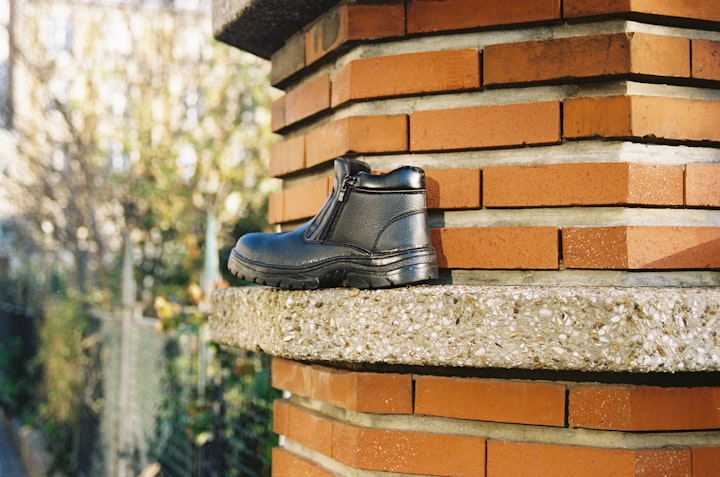The Pros and Cons of Infant Daycare
A Different Approach

Given the overwhelming importance of infancy in the normal development of most animals, including our species, the issue of infant daycare becomes consequential in many ways. Is infant daycare a positive undertaking, a negative endeavour, or does it swing on a wider spectrum? It is quite evident that we are social animals. However, should infancy be subjected to this fact by way of the daycare system or introduced to it more appropriately following this crucial period in our lives? We seem to be disregarding the possibility of harm being done to our toddlers in favour of complete parental fulfillment. The women-and-children-first principle is turning into the women-first standard. Freud’s insight about early childhood cannot be ignored any longer. If our children constitute our future, let us guarantee them one.
Like most issues that seem to preoccupy our psyche, whether it is abortion, the death penalty, or Freud’s merit, researchers on infant daycare are also divided into two camps: one in favour of infant daycare and one against it. Apparently, we only thrive in conflict. Infant daycare, however, can be and perhaps should be regarded as an issue necessitating a greater deal of attention on our part. After all, we are discussing the welfare of our children, and what else is more important. The question we must therefore grapple with is whether or not daycare is appropriate for very young children. More specifically, should children younger than five years of age be put in daycare?
Research-Related Views
Clarke-Stewart (1989) studied whether infant daycare may result in emotional insecurity, social maladjustment, and intellectual precocity on the part of the infants. Her overall conclusion stressed the need for more research, while pointing out that reality — maternal employment — should constitute the barometer for infant daycare policy.
Frankel (1994) used psychoanalytic and attachment theories as well as daycare research to determine the importance of the mother-child bond during the infant’s first two to three years of life. Most research findings were inconclusive, but they showed a correlation between several attachment disorders and early entry into daycare.
Feagans and Manlove (1994) explored the triangular relationship between parents, infants, and their daycare teachers. They discovered that infant problems in daycare were viewed by teachers as emanating from the parents, and that a better communication between teachers and parents could improve the infants’ overall behaviour.
Zigler and Finn-Stevenson (1995) investigated the environmental inadequacy of child care. They emphasized the need for a state-sponsored childcare system instead of the actual federal umbrella, and suggested the School of the 21st Century as the solution to this crisis.
Zigler, Finn-Stevenson, and Marsland (1995) examined the merits of child care in the School of the 21st Century. Stress was placed on the system’s high-quality infrastructure, which sported its modernity in effective child rearing.
These studies summarize the present views involving infant daycare. While most researchers admit that current data is still insufficient in order to resolve the issue, a few seem to think that a solution has already been found. These psychologists view the reality of the School of the 21st Century as the answer: “a school-based/school-linked family support program designed to promote children’s optimal development by providing high-quality child daycare and support services to children from birth through age 12” (Zigler, Finn- Stevenson, & Marsland, 1995, p. 1302).
The Pros
Infant daycare offers caregivers (mostly mothers) the ability to view the responsibility involved with a new baby in a better light. A short time after birth, mothers are already able to go back to work and continue with their normal lives. The financial burden created by the newly arrived infant can be more easily absorbed by the speedy return of an important source of income. Family life does not have to be compromised on account of the new family member. Daycare relieves a great deal of the pressure created by the demands of a newborn. Potential emotional problems arising from this new reality can be dealt with and even prevented before the damage sets in.
Furthermore, there are also daycare benefits to the infant that have to be considered. Professional parenting based on modern methods can help the newborn thrive in a more stable fashion. A richer environment can give the infant more stimuli to deal with and therefore, a potentially more enriching experience. Moreover, the contact with other neonates can favour an early sociability on the part of the newborn.
The Cons
In previous decades, without adequate data as to the consequences of such an undertaking, the School of the 21st Century has been implemented in over 400 schools in 14 states in the USA. Newborns, barely able to absorb their new surroundings, were thrown, head first, into a larger and more competitive environment. In a home, an infant may share his or her caregiver(s) with other family members, but the centre of attention remains around him or her. In daycare, however, the sharing is always too great and probably overwhelming in view of the large number of other infants.
The value of trust and the sense of the self may be diminished in a daycare setting, whereas in a home setting, at least the sense of self can be highly developed by the toddler. In addition, although the possibility of a deviant attachment behaviour is plausible in the home, the infant has a greater chance of developing such a behaviour in daycare due to the loss of the mother and the strange situation that ensues following that maternal deprivation.
Individuality, which is highly regarded in our society, may also be compromised. Environmental differences disappear during the daily time period spent in daycare, since infants are reared collectively. Only their innate differences may surface during that long dosage of togetherness. Our success as a species, however, may lie in part on our combined environmental differences. The amalgamation of our unique talents brings forth our genius.
Conclusion
Until a thorough body of work on the merits of infant daycare becomes available, a moratorium seems to be the only sensible step to be taken. If we value the future well-being of our children as much as we say we do, the decision to abolish infant daycare is the right one. Before age three (preferably five), children should receive the parental care that they are entitled to. The will of bringing a new life into the world should carry with it the responsibility of taking good care of it.
Governmental policy should therefore be geared towards this fact. Daycare will remain available for children, but not for infants. Parents should be held accountable for their infant’s initial épanouissement. If foolish icons like religious figures are still considered as sacred, we can easily award that status to our own tots.
References
Clarke-Stewart, K. A. (1989). Infant daycare: Maligned or malignant? American Psychologist, 44(2), 266–273.
Feagans, L. V., & Manlove, E. E. (1994). Parents, infants, and daycare teachers: Interrelations and implications for better child care. Journal of Applied Developmental Psychology, 15(4), 585–602.
Frankel, S. A. (1994). The exclusivity of the mother-child bond: Contributions from psychoanalytic and attachment theories and daycare research. Psychoanalytic Study of the Child, 49, 86–106.
Zigler, E. F., & Finn-Stevenson, M. (1995). The child care crisis: Implications for the growth and development of the Nation’s children. Journal of Social Issues, 51(3), 215–231.
Zigler, E. F., Finn-Stevenson, M., & Marsland, K. W. (1995). Child daycare in the schools: The School of the 21st Century. Child Welfare, 74(6), 1301–1326.
About the Creator
Patrick M. Ohana
A medical writer who reads and writes fiction and some nonfiction, although the latter may appear at times like the former. Most of my pieces (over 2,200) are or will be available on Shakespeare's Shoes.






Comments
There are no comments for this story
Be the first to respond and start the conversation.